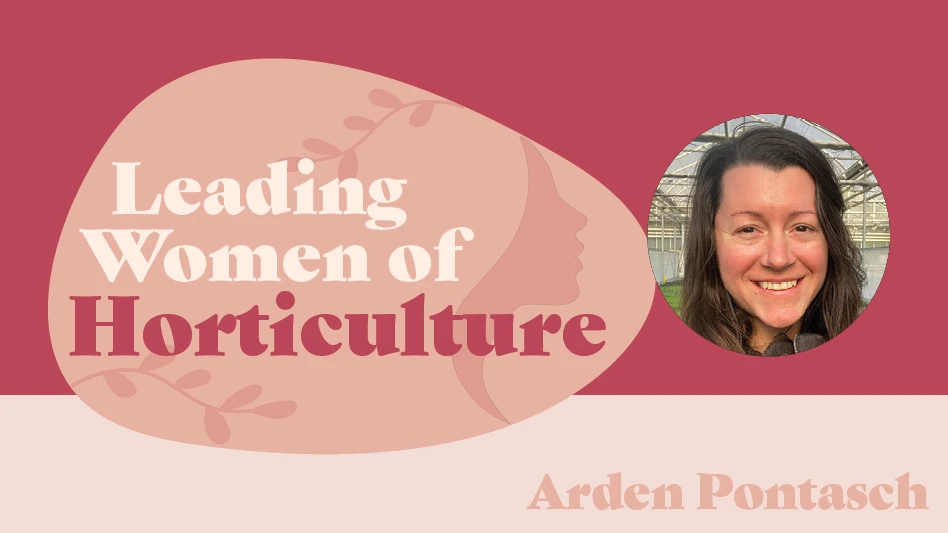
Leonardo Casieri, Global Research Manager with Mycorrhizal Applications, explains how mycorrhizal fungi affect plant nutrition.
1 | What is the role of mycorrhizae in plant nutrition?
Outside the root, mycorrhizal fungi develop into the soil by extending their mycelium (hyphal network) and prospecting for nutrients far from the plant. The nutrients are relocated and delivered to the root. They are exchanged with the host plant through dedicated exchange structures. In this trade, the plant obtains mainly water, macronutrients
The main outcome of this complex and finely tuned symbiotic interaction, and ultimately the role that mycorrhizae play, is to greatly improve the ability of the plants to gather and utilize water and nutrients, from the surrounding soil or substrate.
2 | Why should growers consider using mycorrhizal fungi to improve plant nutrition?
This mycorrhizal symbiosis directly contributes to plant nutrient availability and utilization throughout the plant’s entire life cycle.
Mycorrhizal fungi are capable of accessing nutrient pools in the soil/substrate that are inaccessible to plant’s roots by solubilizing these tightly-bound nutrients and delivering them to the plant. Due to this increased nutrient efficiency, mycorrhized plants need significantly lower amounts of readily-available fertilizers compared to non-mycorrhized ones, which reduces the economic impact of plant nutrition on the overall costs of plant production.
3 | How does mycorrhizal inoculation affect different types of plants?
Mycorrhizal fungi adapted and evolved to interact with different plant species over more than 400 million years. In doing so they differentiated in specific and particular types of mycorrhizae, among which the most important are the Endomycorrhizae or Arbuscular mycorrhizal fungi (AMF), which interact with many flowering ornamentals, vegetables and farm crops, and the Ectomycorrhizae, which interact mainly with hardwoods and conifers.
The most efficient mycorrhizal inocula (such as the MycoApply® professional brand produced by Mycorrhizal Applications) have different fungal species either of Endo- and/or Ectomycorrhizal fungi, capable of interacting simultaneously with multiple plants also belonging to different species. This diversity improves the plants’ environmental conditions, giving them an advantage.
More specifically, mycorrhized plants present faster growth and better resistance to stresses compared to non-mycorrhized ones. This might be the critical factor for a successful establishment of plants in a new environment, such as a production container, and for faster and improved plant production in controlled conditions.
4 | What do growers need to know about applying mycorrhizae?
Although mycorrhizal interactions improve plants’ nutrient availability and utilization and
Another key factor to establish mycorrhizae is to carefully apply the inoculum as close to the plant’s growing roots as possible, to facilitate the contact with the active ingredient (mycorrhizal fungi) and speed up the development of the symbiotic interaction.
5 | Aside from plant nutrition, are there other unforeseen benefits of mycorrhizal inoculation?
Several studies and field trials have shown that plants’ resistance to abiotic stresses (including drought, salinity, pH, and heavy metals) is greatly increased. Another indirect beneficial effect of mycorrhizae that has been documented in the scientific literature is an improved ability of the plant’s defense mechanisms to be less impacted by pest attacks. This increase in immune response is considered more of an indirect
In summary, plants receive many benefits from the commercial application of mycorrhizal fungi. These include improved fertilizer efficiency, better and faster plant adaptation to new growing environments, improved plant growth in
For more: www.mycorrhizae.com
Get curated news on YOUR industry.
Enter your email to receive our newsletters.
Explore the October 2018 Issue
Check out more from this issue and find your next story to read.
Latest from Nursery Management
- The Growth Industry Episode 3: Across the Pond with Neville Stein
- Trends: Proven Winners 2025 perennial survey shows strong demand
- Online registration opens for the 2025 Farwest Show
- Sustainabloom launches Wholesale Nickel Program to support floriculture sustainability
- Plant breeding as an art
- Society of American Florists accepting entries for 2025 Marketer of the Year Contest
- American Horticultural Society welcomes five new board members
- Get to know Christopher Brown Jr. of Lancaster Farms







